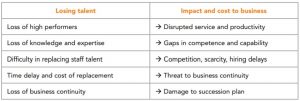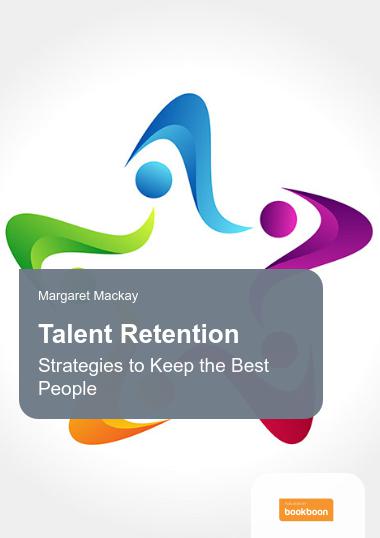Employee Retention: 6 strategies to keep your best talent

Hiring and firing, is as much a part of business as sales and results. And for one reason or another, employee turnover is unavoidable. However, when an employee leaves, it can cost your business. Hiring new employees involves investing time and resources into hiring, training, and certifying.
Employee Retention: The Stats
According to research from Compdata’s 2016 survey comparing different turnover rates, the industry with the highest turnover rate in the UK is publishing and events at 17.7%. The lowest being general management and admin industry at only 3.1%. In the US, the industries with the highest turnover rates include staffing at 352% and hotels which are up to 300%, largely as a result of temporary staff and contract work. The sector in the US with the lowest turnover rate is Government, at 1.5%.
The disadvantages to losing talent
“94% of employees say that they would stay at a company longer if it invested in their career development.”
– Linkedin’s 2018 Workplace Learning Report .
6 tips to keep your best talent
1. Hire great people
According to a report from The Economist, talent retention begins in the initial recruitment of people who are a good fit with the organisation. A stylish employer brand can pull in many candidates, but skilled people are interested in the challenge and social mission of the work, as much as the legal contract. Recruitment needs to respect the interests of both parties as a two-way deal. The more attention paid to an employee’s preferences at the outset, the more reciprocated loyalty.
2. Invest time in employee development
Linkedin’s 2018 Workplace Learning Report tells us that 94% of employees say that they would stay at a company longer if it invested in their career development. Yet, the number one reason employees say that they feel held back from learning is because they do not have time to learn the skills they need. Managers play a big role in employee learning. 56% of employees say that they would spend more time learning if their manager directed them to complete a specific course in order to gain or improve their skills. Leaders and managers need to own talent development.
3. Train managers in people skills
Every boss must be a people manager. Managers need to have confidence and competence in their skill set to manage people effectively, listen well and attempt to meet reasonable employee expectations of supportive management. Research demonstrates a strong correlation between the quality of people management and talent retention. Indeed, a troubled working relationship acts as a major push factor on a worker’s decision to quit.
4. Recognise and reward talent
Skilled people are an immense asset with growth potential. The simple recognition of exceptional work operates as a powerful motivator for many employees. Consider what different employees value and what can be done to improve recognition. Focus on talent expectations of reward and development opportunities for career progression.
5. Create a relationship
According to a paper written by Dr. Frederick P. Morgeson for National Association of Human Resource Consultants, it is often helpful for recruiters to act as the point person for new hires during the first 30 days on the job as a strategy to strengthen the relationship between new employees and employers.
6. Evaluate the impact of talent programmes
Evaluate the feedback from participants on the structure of the talent development programmes. Then assess the effectiveness of current talent programmes. Track stories of talent retention to pin down what works in your context and organisation.










